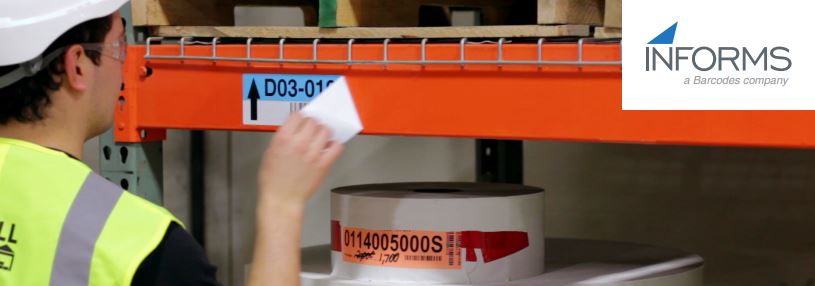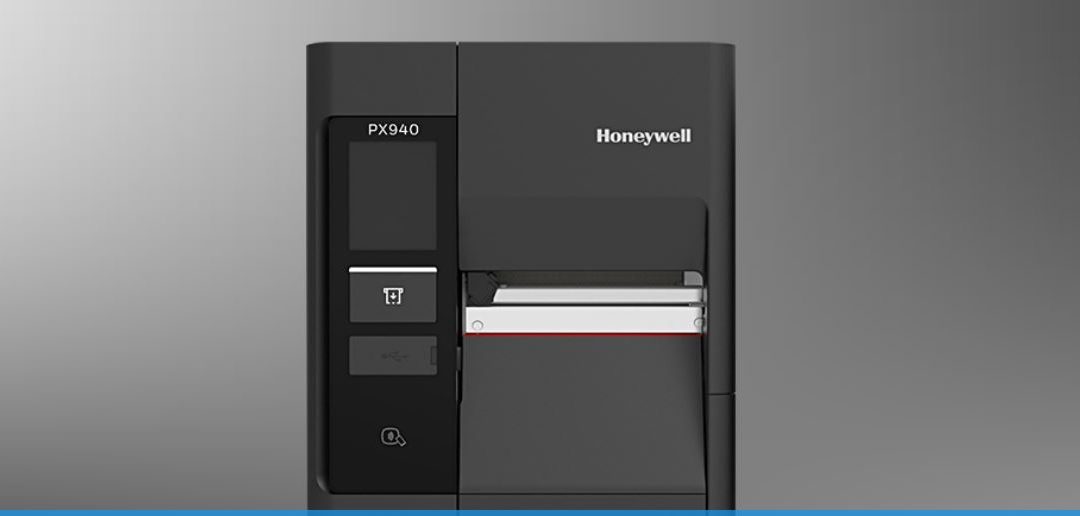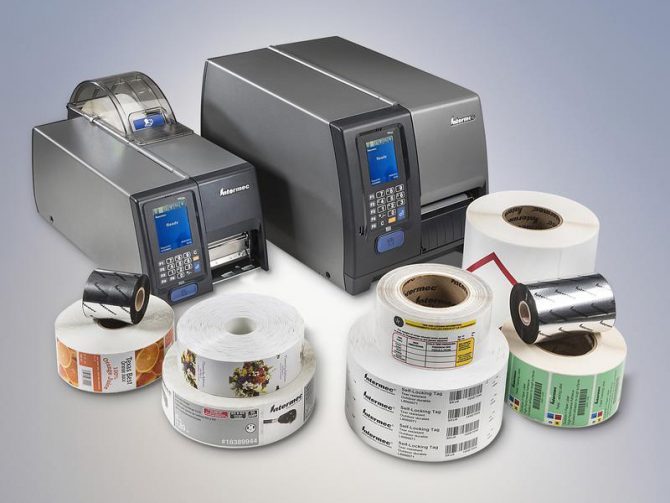
by Chelsea Williams | Nov 14, 2019 | Uncategorized
Laboratory labeling might seem like just a small part of an overall huge operation, but when you consider the information these labels carry, it becomes a much more critical step—one you want to get right. When done correctly, labels provide necessary information, increase efficiency, and keep everything organized and accounted for. When done wrong, they become a catalyst for an operation gone awry. Specimens can be mislabeled, processes can be disrupted, and all the necessary information your operation relies on can be lost.
To ensure your operation doesn’t succumb to disorganization, it’s important that your laboratory labeling processes are done correctly.
DO:
Use High-Quality Printed Labels
A high-quality label begins with the raw materials. Make sure you only use the highest-quality printed labels that are easy to read. A clear, visible print means fewer errors—especially when compared to hand-written labels or labels with a lot of text, which are vulnerable to human error. These are more cost-effective because they won’t need to be re-printed over and over.
Use Barcodes to Track Specimens
Implementing barcoding into your laboratory labeling processes creates an easy-to-use and easy-to-understand system that streamlines specimen management. By scanning barcode labels, you can automate tracking processes and stay organized.
Work with a label provider to ensure you are using the right label for the right job
Using the right labels for your application is important, but it’s not always clear which ones are best. Make sure you work with a reputable label provider. These professionals are experts on labels and labeling solutions, and can help your operation create the laboratory labeling solutions you need, and provide guidance to make it easier.
DON’T:
Handwrite Labels
Not only are handwritten labels difficult to read—they’re also unreliable. Regular ink from pens and markers can smear, and handwriting is easily misread, which creates errors. Printed labels are much more reliable, easy to read, and accurate.
Don’t Forget the Barcode
The barcode itself is one of the most important aspects of your label. Barcodes are prevalent everywhere for how effective they are at tracking—almost every label you encounter on food has a barcode, so why not your lab specimens?
It’s estimated that an error is made once every two hundred keystrokes—switching to barcodes can significantly reduce the rate of error. Barcoding has an error rate of about one in three million serial barcode scans, and one in ten million two-dimensional barcode scans. This level of accuracy goes a long way to protect the integrity of your lab.At Informs, we work with our partner Honeywell to offer cost-effective barcode labels that allow for different indoor applications.
Purchase the Wrong Label
Labels come in many forms, and each one is best suited to a specific application. Make sure you are purchasing the right label for your application. Your color combination needs enough contrast to be readable, and the adhesive needs to stick well to the surfaces you are labeling. Make sure your laboratory labeling solution is correct for your operation as well.
If you aren’t sure which labeling solution is right for you, speak with an industry expert at Informs today! Informs, Inc. offers a wide array of labels and labeling solutions for almost any industry. Our team of experts is well-versed on the ins and outs of labeling, and can identify the best solution for you.
To learn more about the solutions we offer and how you can increase efficiency and accuracy in your laboratory labeling processes, contact Informs today.

by Chelsea Williams | Oct 29, 2019 | Uncategorized
In a warehouse environment, things can easily fall into chaos when you have a disorganized space. Warehouse rack labels are important because they are the best way to ensure items don’t fall through the cracks. Warehouse labels make it easier to ensure everything is accurately accounted for and your warehouse, label bins, and storage areas stay organized.
Download our product catalog, to learn more about our full line of data collection hardware, labeling and barcode supplies, and services.
For warehouse rack labels to be truly successful at keeping your inventory and assets organized, you need to make sure you choose the right labels and the right location. Here are a few tips to help you make the right decision:
Environment
There are three main environments that affect what types of warehouse labels you will need to buy. Each of these types of labels have their own qualities that make them the best option for certain environments:
Indoor storage
For dry, indoor environments, these labels adhere very well and can be attached to bins, placards, metal frames, and more.
Outdoor storage
This adhesive can survive different weather conditions like rain, humidity, wind, and some degree of temperature fluctuations.
Cold storage
These types of labels are incredibly durable and can withstand extreme temperatures like those found in industrial freezers.
Materials
Warehouse rack labels come in a wide variety of materials and adhesives to suit different applications. Some of the most popular types are:
Polyester rack labels
These are highly-readable labels that are last a long time. They are great for short-range indoor tracking and all types of indoor warehouse environments. These labels are available in permanent high-performance adhesive or removable versions for temporary applications. They can also be attached to foam tape and magnets for dry storage environments.
Retro reflective labels
Retro reflective labels are great for scanning long ranges because of their high visibility. These are best suited for indoor warehouse environments. The reflective nature makes it more visible to both scanners and the human eye.
Magnetic labels
These are best for temporary and adjustable applications. They are best suited for environments where they would adhere to metal surfaces and may need to be moved from place to place. They are easy to apply, re-position, and remove, and are great for short-range or indoor tracking.
Cover-up rack labels
These warehouse labels aren’t used for data collection and tracking so much as they are used to cover up old, outdated warehouse rack labels that have been placed on beams. Usually durable, and made with high-quality adhesive, these seamlessly apply over old labels so you don’t have to worry about cleaning, scraping, or painting over the beams.
Uses
Choosing the right warehouse rack labels that work best for your application requires an understanding of your needs. Do your labels need to be permanent or removable? Do they need to withstand harsh temperatures or do you only need them for dry indoor environments?
What about scan range? If you need overhead bulk storage labels for instance, you should be able to accommodate long-range scanning of 15-50 ft., and perhaps your labels need to be retro-reflective for better scanning. Shorter range scanning of 0-15 ft. can be used for most other labels that are placed in easy-to-read areas.
Also consider the surfaces your labels will need to adhere to (metal, glass, plastic, etc.) and the shapes of those surfaces (curved, flat, etc.). This will affect the type of adhesive you need.
Conclusion:
The right warehouse rack labels will boost productivity and overall efficiency, streamline operations, eliminate errors from manual data entry, increase visibility, and keep your operation organized. You will only realize the full benefits, however, if you know which labels to choose.
Informs, Inc. offers a variety of warehouse rack labels in assorted sizes, materials, and adhesives to suit the needs of any warehouse or distribution center. Still unsure about which labels are right for you? Contact the experts at Informs today!

by Chelsea Williams | Oct 10, 2019 | Uncategorized
Warehouse rack labels are critical for ensuring organization and accurate tracking within warehouse operations. They help identify inventory and assets and empower workers to work efficiently. Without them, operations slow down, inventory counts can become inaccurate, and items can become lost within the shuffle.
In order to prevent these issues, it’s important to make sure you choose the right warehouse rack labels for your operation. There are many different types of labels, and each is best suited for certain applications. The right one for you will depend on your location, the conditions of your warehouse, and the application. Informs provides Honeywell printer supply solutions, offering a variety of labels and tags for your different warehouse application needs.
Here are the most common types of warehouse rack labels:
Warehouse Rack Beam Labels
These are the labels you will most commonly find on warehouse racks. They mark each bay location, and typically use 2D barcodes for scanning. They may also have letters and numbers for workers to identify contents without scanning.
These warehouse rack labels are usually made of polyester or a similar material to ensure better durability against tears or fading and can be either permanent or temporary depending on the adhesive. They may be reflective if you require long-range scanning.
Warehouse Pallet Labels
The aptly-named warehouse pallet labels are used to track items that move around in a warehouse, like those on pallets, or in cartons/bins. Sometimes, they are known as license plate number (LPN) labels. They work with your warehouse management system to track items as they make their way through the warehouse, from the time they enter to when they leave. These are usually paper labels, and they typically come on pre-printed rolls. The adhesive used can usually withstand a variety of temperatures and hazards found within many warehouse applications.
Warehouse Rack Upright Labels
Similar to location labels, these include a group of labels stacked one on top of another. They are sometimes called “totem” labels. They are often color-coded and contain specific information for each level of racking within a bay. They also may or may not be accompanied by location labels, which are used on all rack levels to help with organization and inventory. The accompanying warehouse rack labels are usually also color-coded to correspond to the vertical label.
Warehouse Tote and Bin Labels
These are usually paper-based labels placed on bins, totes, and other containers. Warehouses will sometimes use these totes to house individual items, but they can also use them to keep collections of small items, like nails, screws, and other small hardware for instance.
Since plastic bins and totes are reusable, the labels need to be removable and replaceable, so correct labels can be applied whenever the contents within a bin or tote change.
Warehouse Bulk Storage ID
Similar to tote and bin labels, bulk storage warehouse rack labels are used to track bulk packages. Often larger than what can be accommodated in a bin or tote, these labels sometimes require solutions like overhead signs.
With these labels, you’ll want to ensure you have the ability to perform long-range scanning. These warehouse rack labels often include retro-reflective graphics to achieve better accuracy when scanning, and more visibility to the human eye.
The Right Label for Your Operation
Whatever applications you have in your warehouse environment, you’ll want to make sure you choose the best labels for your needs. Labels come in a variety of materials and adhesives that can withstand anything from dust and dirt in a warehouse to freezing temperatures in a cold storage facility. The best label for your operation will depend on your individual requirements. Informs offers a variety of labeling materials and solutions for warehouses and distribution centers, including warehouse rack labels. If you need more information on which labels are right for you, contact the experts at Informs today.

by Chelsea Williams | Sep 24, 2019 | Uncategorized
Patient safety is a top priority in healthcare. Error prevention is a huge component of overall patient safety, and can be just as important as treatment when it comes to overall well being. As effective as your professionals are with patient care, errors can be life-threatening.
In a hospital environment, where stakes are high and lives are on the line, errors have no place. Luckily, technology developers have been on it, developing innovative solutions like barcode tracking that help prevent these life-altering errors from occurring in the first place. Here’s how barcode tracking can improve patient safety and prevent errors:
Download our product catalog, to learn more about our full line of data collection hardware, supplies, and services.
Prevent Mislabeling
Medication administration errors are at fault for over 4,000 preventable adverse drug effects in the healthcare industry annually. This is out of over 6 million prescription medication doses that are administered per year. While it is a small percentage, allowing these preventable errors to continue is careless and can be life-threatening, which is why error prevention is a must.
This doesn’t just affect pharmacies—it affects hospitals too. Medications can be mislabeled when bulk packages are broken up into units for individual patients and re-labeled. Solutions like Honeywell desktop printer PC42d can simplify the re-labeling process and improve accuracy. By ensuring each bottle is labeled correctly, these adverse effects can be prevented, and patients can be treated safely.
Improve Specimen Collection
A proper labeling system can go a long way in the name of error prevention. With this, nurses and lab technicians alike can mitigate mistakes and errors with mislabeling specimens—a leading source of medical errors in the healthcare industry.
Before, specimen labels were printed at a centrally-located printer in a lab, and later brought to the specimen for labeling. While clinicians try their best to keep everything accurate, human error is only natural, and errors can arise.
The best way to prevent this is to print labels as soon as specimens are collected. Wireless, hands-free barcode scanners like Honeywell’s latest printing solutions mounted to medical cards allow labels to be printed bedside, which increases efficiency while decreasing errors. High specimen collection rooms require wall-mountable printers.

by Chelsea Williams | Aug 21, 2019 | Uncategorized
An outsider looking in may not guess how much actually goes into operating a retail warehouse. They may have outdated views of simple storage locations for goods, and now understand how deeply warehouse operations affect the global supply chain. As a retail warehouse operator however, you are well-versed in the complexities and challenges that run rampant within the warehouse.
Operating a retail warehouse is by no means easy, but it can be made easier with the right strategies and tools in place.
Here are a few ways you can improve retail warehouse efficiency and reduce costs:
Improve Warehouse Processes, Reduce Costs
Do you have a set of best practices for your warehouse and your workers to follow? Do you stick to them? Warehouses are not immune to growing pains that come with any expansion, and over time, processes can get muddled. It’s important to revisit and update processes when you need, especially to accommodate for growth.
Start by conducting an operational audit and see whether or not processes are completed in an appropriate timeframe. If not, try to identify any bottlenecks that may be hampering your efficiency.
Improve Supply Chain
Create an inbound and outbound freight schedule for the best workflow of dock employees, and schedule purchase orders to create the best workflow. If your schedules are jam-packed in the mornings and evenings, but slow in the middle, workers are not being utilized during that time, which costs you money. You can eliminate this by optimizing both freight schedules and shift schedules.
Optimizing your schedules won’t improve retail warehouse efficiency enough on its own, however. You need to incentivize your workers. Create a system of incentive pay—especially for pick and pack employees to help speed up some of the processes in your retail warehouse.
Download our product catalog, to learn more about our full line of data collection hardware, supplies, and services.
Upgrade Technologies
Old, obsolete technologies won’t help you create a more efficient retail warehouse. The only way forward is to adapt and leverage the advancements that warehouse technology has made. Unreadable barcodes can cause heavy fines and chargebacks to be levied against you. You can safeguard against this by implementing a barcode verification system.
There are a number of factors that can cause unreadable barcodes, like labels being printed at the wrong temperatures, low contrast, quiet zone violations, and more. Barcode verification ensures each barcode is readable before packages leave the retail warehouse. Upgrade to Honeywell’s PX940 high-performance industrial printer, with integrated label verification technology providing error-free printing.
Upgrade Management
The same way obsolete technology holds you back, the way you manage your technology can deeply affect your success. While you may not have the bandwidth to plan, deploy, evaluate and ready the systems in your retail warehouse on your own, you can benefit from managed services that will handle these tasks for you.
Conclusion
For a retail warehouse to reach maximum efficiency and productivity, each cog in the machine needs to be well-calibrated and working in tandem with the others. Analyze the processes in your warehouse that you can improve internally and create a plan to remove bottlenecks and optimize workflow. It may require a simple solution like updating the processes you currently have in place to be more efficient. For even more efficiency, you may need to consider upgrading your technology and how you manage it.
Informs, Inc. offers a wide range of solutions designed to help retail warehouses operate more efficiently and cost-effectively, as well as a number of managed services to help you get the most out of your technology.
Interested in learning more about our products and services? Contact Informs today.

by Chelsea Williams | Aug 8, 2019 | Uncategorized
Barcode printers are an essential part of operation. When you encounter barcode printer errors, you can experience costly downtime, chargebacks, and a loss in productivity. To prevent this, take a proactive approach and ensure you are taking care of your printers.
Here are five easy ways you can help maintain barcode printers and reduce errors:
Purchase the Correct Media
The first step is to ensure the media you use is right for your printer. If the barcode label is too abrasive, it can wear through the protective ceramic coating and cause damage to the print head. This doesn’t just apply to the barcode label, but the ribbon as well. Ensure the transfer ribbon is as wide, if not wider, than your label itself, and is made from quality materials that don’t leave wax/resin buildup. Cheap media can cause the printer to collect dust and debris, resulting in poor print quality, frequent print head replacements, and barcode printer errors.
Clean Regularly
Low-quality media isn’t the only factor that causes dust, debris, and build-up. You environment is likely to cause this to some degree. Every printer will need to be cleaned on a regular basis to keep it in ideal working condition.
Follow the instructions from the printer’s user manual, and clean the print head and platen roller each time you install a new ribbon in your thermal printer. This only takes a few minutes and could potentially save thousands of dollars over the lifetime of the printer.
Monitor Printer Settings
Each printer has manufacturer recommended settings put in place to help you get the most out of your printer. While these settings are often customizable, increases or changes to these recommended settings can eventually shorten its lifespan. Fast printing speeds can not only increase the number of barcode printer errors you may encounter, but it could damage the printer.
Don’t Damage the Printer Sensors
Airborne particles like dust and paper fibers are unfortunately impossible to avoid. These particles can damage print sensors, or block them altogether over time if they are left to build up. In addition to regular cleanings, keep these at bay by brushing them away with small, clean paint brushes or canned air duster—the same you would use to clean a keyboard.
Prevent Print Head Contamination
Print heads are not only delicate, but expensive to replace. It is essential to prevent damage to the print head whenever possible. Make sure you aren’t risking print head contamination. Only use print heads that adhere to the manufacturer’s specifications. You may find inexpensive parts offered by a third party, but don’t be fooled by what seems to be a good deal. You will only end up paying more in the long run when these parts break or damage the printer.
Conclusion:
Barcode printer errors are a costly nuisance. If you are experiencing more errors than you should, it’s likely due to sub-par printer maintenance or materials. A barcode printer is a significant investment, and should be treated as such. By following manufacturer instructions and doing some basic maintenance, you can prevent these errors from occurring and extend the life of your printer.
Informs, Inc. offers a wide range of high-quality industrial barcode printers and media from the Honeywell industrial label printer family. For more information on printer maintenance and which media is right for your printer, contact Informs, Inc. today.







Recent Comments